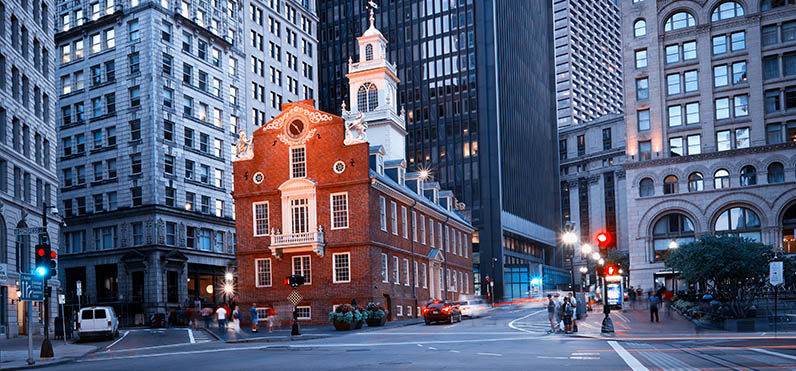The zoning laws in Massachusetts can be complex – developers and homeowners must navigate the state-wide provisions of the Massachusetts Zoning Act, codified at G.L. c. 40A, and municipal zoning by-laws. The disparate nature of municipal requirements often necessitates a deep dive into the applicable by-laws to identify a solution to the zoning problems facing our clients and the path forward. Out of this landscape, there is a general understanding that when some use or structure has existed on property prior to the adoption of a new or different by-law provision that would otherwise be applicable, there is no requirement that the use or structure be brought into immediate compliance with the new by-law. But what are the practical implications of the protections afforded to a use or structure that is determined to be “preexisting nonconforming”? This question is principally answered by G.L. c. 40A, § 6, relating to existing structures, uses or permits, and the case law that has interpreted same, and this article is intended to provide a basic overview of the concept.
For example, a property lawfully used as a restaurant in a business district is rezoned to a residential district. The restaurant use may continue despite the fact that residential use is the only permissible use in the district.
Preexisting Nonconforming Uses
A preexisting nonconforming use is a use of property that was lawfully begun prior to the adoption of a zoning by-law that would otherwise prohibit same. Such use may have come into being prior to the municipality’s adoption of zoning by-laws altogether (which, in the typical scenario, was no later than the mid-20th century) or was permissible under a previous iteration of the zoning by-laws but rendered unlawful by a subsequent amendment.
For example, a property lawfully used as a restaurant in a business district is rezoned to a residential district. The restaurant use may continue despite the fact that residential use is the only permissible use in the district. However, the rezoning of the property does have an impact upon the future use of the property. Pursuant to G.L. c. 40A, § 6, municipalities may regulate uses that have either been abandoned or not used for a period of two or more years (under some municipal zoning by-laws this duration is shortened). Thus, in our example, if the restaurant use ceases for five years, the owner could not resume the restaurant use as a matter of right. Instead, the owner would be required to make the use of the property compliant with the uses permissible in the residential district.
Likewise, a change to the restaurant use may be impermissible if it runs afoul of the “Powers test”, the framework for which was established by the SJC in Powers v. Building Inspector of Barnstable, 363 Mass. 658 (1978). A use will be considered to be a change from the protected use if:
(a) The resulting use does not reflect the nature and purpose of the use existing when the zoning law took effect which made it nonconforming; or
(b) There is a difference in the quality or character, as well as the degree, between the resulting use and the originally protected use; or
(c) The resulting use is different in kind in its effect on the neighborhood from the originally protected use.
The party seeking to carry on the preexisting nonconforming use bears the burden of demonstrating that its current use is consistent with the originally protected use and, if there is a proposed change to that use, seeking zoning relief to ensure the modification is lawful.
Preexisting Nonconforming Structures
With one exception (see details below), a preexisting nonconforming structure is a structure that was lawfully constructed prior to the adoption of a zoning by-law that would otherwise prohibit the construction of same in its present configuration. A preexisting nonconforming structure relates to the dimensional configuration of the structure, rather than the use of the property. Such structure may have been constructed prior to the municipality’s adoption of zoning by-laws altogether or was permissible under a previous iteration of the zoning by-laws but rendered unlawful by a subsequent amendment.
For example, a single-family dwelling was built in the 1800s and has a front-yard setback ten feet from the road. When the municipality adopted zoning, the house was placed in a residential district, which requires a front-yard setback of thirty feet. The house would be deemed to be lawfully preexisting nonconforming. However, such nonconformity does have an impact upon the future development on the property. Pursuant to G.L. c. 40A, § 6, and under municipal zoning by-laws, while protections are afforded to all preexisting nonconforming structures, certain additional protections are afforded to structures utilized as single- and two-family dwellings. Without delving into the myriad nuances that may present (as it is beyond the scope of the intent of this article to provide a general overview), zoning relief is typically necessary for any reconstruction, extension or structural change of a preexisting nonconforming structure, and for any alteration of a structure to provide for a substantially different purpose or for the same purpose in a substantially different manner or to a substantially greater extent.
As noted above, there is one exception to the rule that, in order to be entitled to preexisting nonconforming structure protection, a structure must have been lawfully constructed prior to the adoption of, or amendment to, a zoning by-law. Effective November 2016, if a property has been improved with a structure for at least ten years, and there is no notice of action filed pursuant to G.L. c. 40A, § 7, which concerns the enforcement of zoning regulations, then the property is entitled to protection, and the structure is to be treated as a legally nonconforming structure. This statutory change remedied the not-infrequent scenario in which a structure had been in existence for a period of years, without challenge, but no building permit could be located or the structure was not constructed in complete compliance with same. In such scenario, the structures would be deemed illegal, and it would be a significant uphill battle to undertake any development on the property.
Takeaway
The general overview provided herein about the distinction between preexisting nonconforming uses and structures is just the tip of the iceberg in terms of what may be encountered by a developer or homeowner seeking to modify or redevelop a property that has either a preexisting nonconforming use or structure (or both) present. Due to fact-specific nature of each property and the unique and disparate provisions of municipal zoning by-laws, it is advisable to consult with an attorney to navigate the applicable zoning laws and establish a path forward.
1The original version of this article used the term “grandfathered” in its discussion of preexisting nonconforming uses and structures. In Comstock v. Zoning Bd. of Appeals of Gloucester, 98 Mass. App. Ct. 168 (2020), the Appeals Court noted its disfavor for the term. The Appeals Court stated:
Providing such protection commonly is known – in the case law and otherwise – as “grandfathering.” We decline to use that term, however, because we acknowledge that it has racist origins. Specifically, the phrase “grandfather clause” originally referred to provisions adopted by some States after the Civil War in an effort to disenfranchise African-American voters by requiring voters to pass literacy tests or meet other significant qualifications, while exemption from such requirements those who were descendants of men who were eligible to vote prior to 1867.
Id. at 171 n.11. In light of the Appeals Court’s discussion, the original version of this article has been revised to eliminate the term “grandfathered.”


